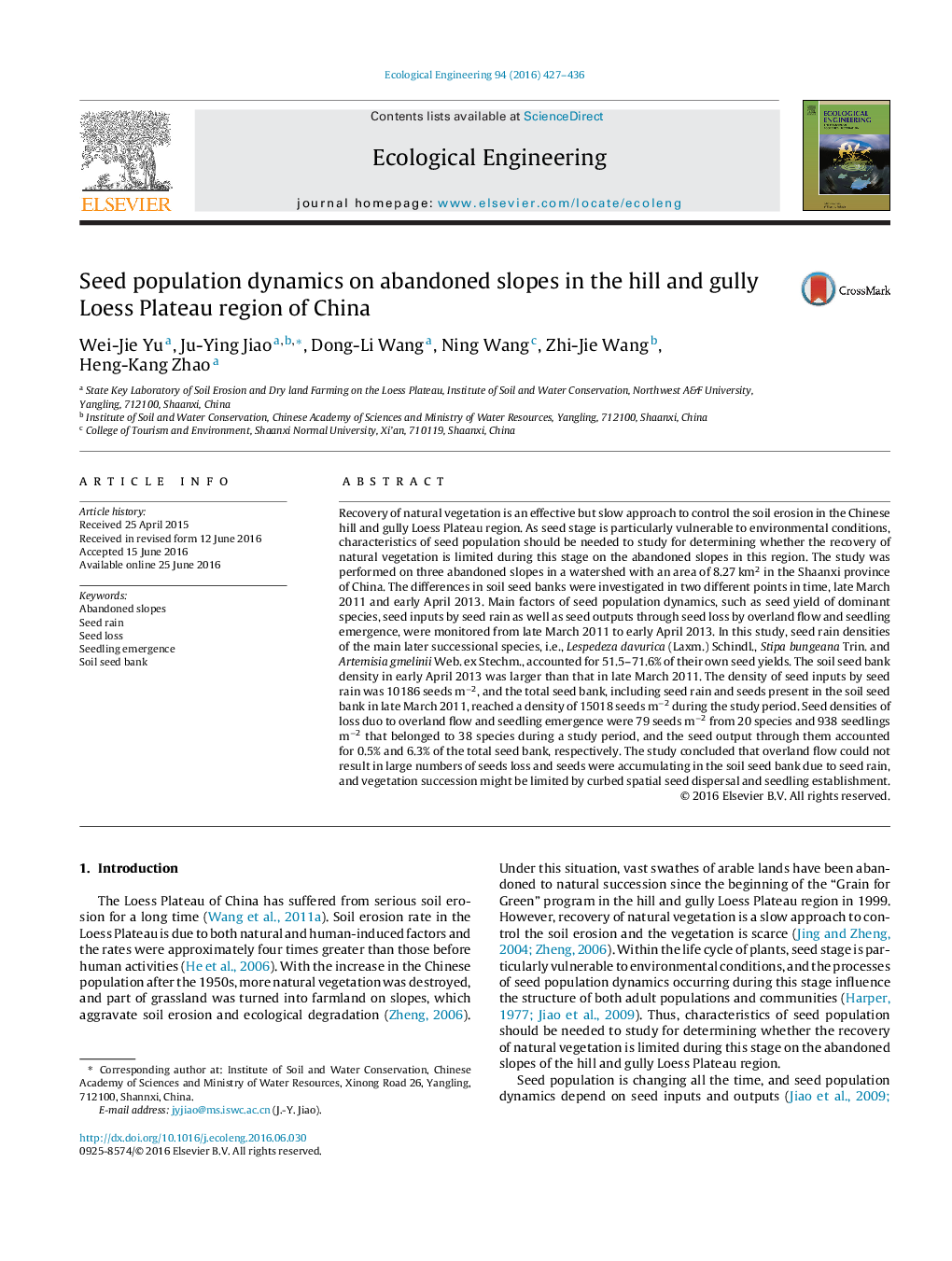| کد مقاله | کد نشریه | سال انتشار | مقاله انگلیسی | نسخه تمام متن |
|---|---|---|---|---|
| 4388569 | 1618005 | 2016 | 10 صفحه PDF | دانلود رایگان |
Recovery of natural vegetation is an effective but slow approach to control the soil erosion in the Chinese hill and gully Loess Plateau region. As seed stage is particularly vulnerable to environmental conditions, characteristics of seed population should be needed to study for determining whether the recovery of natural vegetation is limited during this stage on the abandoned slopes in this region. The study was performed on three abandoned slopes in a watershed with an area of 8.27 km2 in the Shaanxi province of China. The differences in soil seed banks were investigated in two different points in time, late March 2011 and early April 2013. Main factors of seed population dynamics, such as seed yield of dominant species, seed inputs by seed rain as well as seed outputs through seed loss by overland flow and seedling emergence, were monitored from late March 2011 to early April 2013. In this study, seed rain densities of the main later successional species, i.e., Lespedeza davurica (Laxm.) Schindl., Stipa bungeana Trin. and Artemisia gmelinii Web. ex Stechm., accounted for 51.5–71.6% of their own seed yields. The soil seed bank density in early April 2013 was larger than that in late March 2011. The density of seed inputs by seed rain was 10186 seeds m−2, and the total seed bank, including seed rain and seeds present in the soil seed bank in late March 2011, reached a density of 15018 seeds m−2 during the study period. Seed densities of loss duo to overland flow and seedling emergence were 79 seeds m−2 from 20 species and 938 seedlings m−2 that belonged to 38 species during a study period, and the seed output through them accounted for 0.5% and 6.3% of the total seed bank, respectively. The study concluded that overland flow could not result in large numbers of seeds loss and seeds were accumulating in the soil seed bank due to seed rain, and vegetation succession might be limited by curbed spatial seed dispersal and seedling establishment.
Journal: Ecological Engineering - Volume 94, September 2016, Pages 427–436
